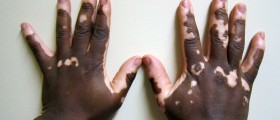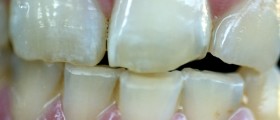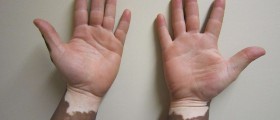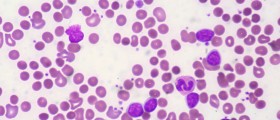
Skin pigmentation disorders affect the color of the skin. Skincells produce a substance known as melanin, to give skin color. When skincells become damaged it affects melanin production. Cell damage may be causedby the following reasons: skin treatment, spots, acne, sun ray damage, process ofaging, rash. However, a high level of personal care and skin protection mayreduce the harmful effects and preserve the skin from damage.
Symptoms and Causes
Changes in the color of skin of women may be caused byhormonal levels, and the use of birth control pills that may influence pigmentation as well along withsun exposure. If the body makes too much melanin, the skin gets darker, if it makestoo little melanin the skin becomes lighter and even pale. Pigmentationdisorders may affect some patches of the skin, or may appear on the whole body.
Patchy facial stains are the most common problem, especially inthe female population. Before any treatment it is very important to diagnosewhether those patches occur as a result of darker pigmentation or some othermore serious condition like vitiligo, for example. Vitiligo is an autoimmunepigment loss. It happens when the body's immune system attacks pigment cells.Vitiligo appears as white stains usually presented around the mouth and eyesarea, or on the back of the hands. In some rare cases, vitiligo can spread overthe whole body. Dark facial stains may sometimes point to vitiligo, because theskin in the surrounding area might seem darker when compared to the smoothwhite skin patches.
Melasma
A custom hormonally caused case of skin pigmentation isMelasma (also known as cholasma). It is characterized by brownish facialpatches, usually symmetrical, shaped like a butterfly. It affects the forehead,cheeks, upper lip and around the lips, nose and chin. It is common in womansuffering from hormonal disorders, thyroid problems, during and after pregnancyas well in the premenopausal phase. It's often referred to as a "pregnancymask", but men can also develop it. The main cause of melasma in men isstress. Hormonal imbalances combined with sun exposure may worsen thiscondition.
Treatment
A proper treatment of melasma includes:
A bleaching cream that helps fade pigmentation(Hydroquionone with Tretinoin)Laser treatment to remove skin blemishesAvoiding the sun exposureUse of a sunscreen lotions. SPF-30 is a minimum protectionlevel.Use of mild soapsFruit creams containing lactic acid, fruit acid or glycolicacidReduced usage of make-up, creams or other products thatirritate the skin or cause allergic reaction.Aloe vera extract has anti-inflammatory properties, itrepairs damaged tissues and stimulate healthy cell growth.
















Your thoughts on this
Loading...